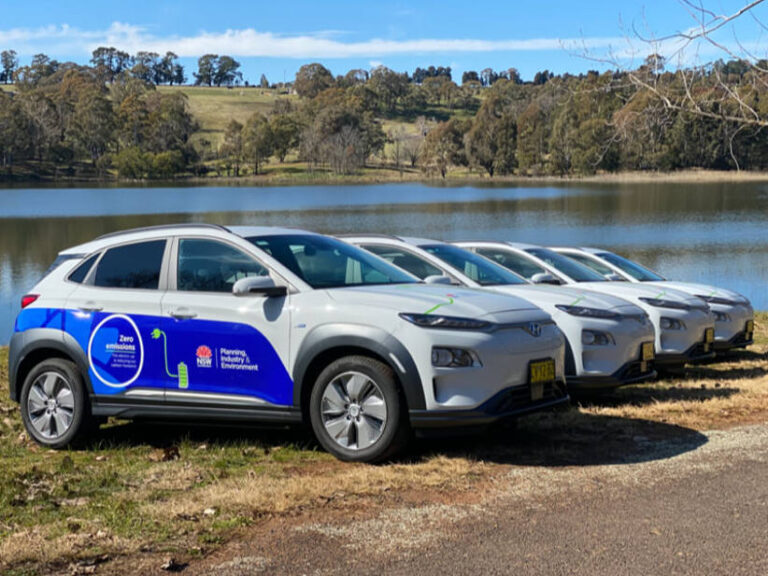– By Caroline Falls –
A session on electric vehicles was one of the highlights of the 2021 IPWEA Fleet conference. But sadly, the themes were similar to other discussions and recent press. Australia is behind the developed world with EV adoption. The governments won’t entertain the idea of subsidies or other policies to encourage fleets and willing early adopters. And the high initial outlay and range anxiety continue to be barriers.
“It’s disappointing we are not hitting the mark the rest of the world is on this issue,” said Alex Kelly, Policy and Communications Officer at the Electric Vehicle Council of Australia.
In 2020, there were 6,900 electric cars sold in Australia, a 2.7 percent increase from 2019 sales, an EVC study showed. The 2020 electric car sales accounted for a tiny 0.7 percent of total car sales. By comparison, electric vehicles in the European Union increased their market share of new vehicle sales to 10.2 percent in 2020 from 3.8 percent in 2019. In Norway, it rose to 75 percent in 2020, from 56 percent the previous year.
“We are looking to a significant lack of encouragement here. Internationally, goals are phasing out use of the internal combustion engine. Here, there’s no direction for car makers. Australia will be the next Cuba,” said Kelly, adding other parts of the world will get priority to receive electric vehicles from car makers. Cuba is known for its lack of modern cars, with traffic dominated by 1950s-style classic vehicles after embargoes and bans on imports enacted following the 1959 Cuban revolution.
Kelly showed a slide with the value of government incentives from Canada, France, Germany, Italy, Japan, UK and the US ranging from the Australian dollar equivalent of between $5,000 and $11,000. In Australia, zero.
On a brighter note, most state governments in Australia are doing something. Some more than others. The ACT is leading the pack, getting a score of “B” from the EV Council for their range of incentives, including investment in public EV charging networks, tax policy on EVs, government-owned fleet EV targets, and transition to electric buses. In addition, the ACT is offering $15,000 interest-free loans for purchasing an EV, said Kelly.
NSW and Qld were rated “C”, VIC, SA and Tasmania got a “D”, and at the back of the pack WA and NT scored an “F”.
Meanwhile, international experience forecasts strong performance of EVs in fleets, said Kelly citing research by LeasePlan. EVs have lower running and maintenance costs, helping to reduce the total cost of ownership. EVs don’t need servicing like an ICE vehicle because, apart from wheels and windscreen wipers, there’s not so many moving parts.
Kelly noted that local governments are doing a lot towards transitioning to EVs, especially with garbage trucks and buses.
“Local government is driving a lot of the change,” said Kelly, adding they are familiarising their local communities and that in response communities are happy to see their local council adopting EVs.
The EV Council has a resource pack for local governments linked here.
[news_list format=”” show_more=”on”]






